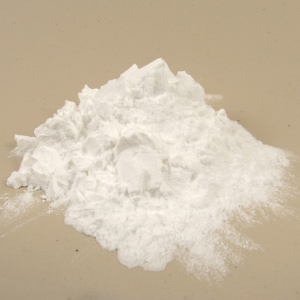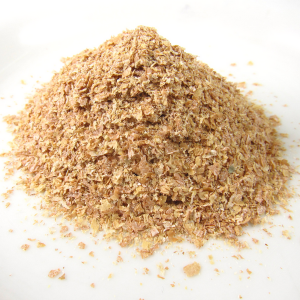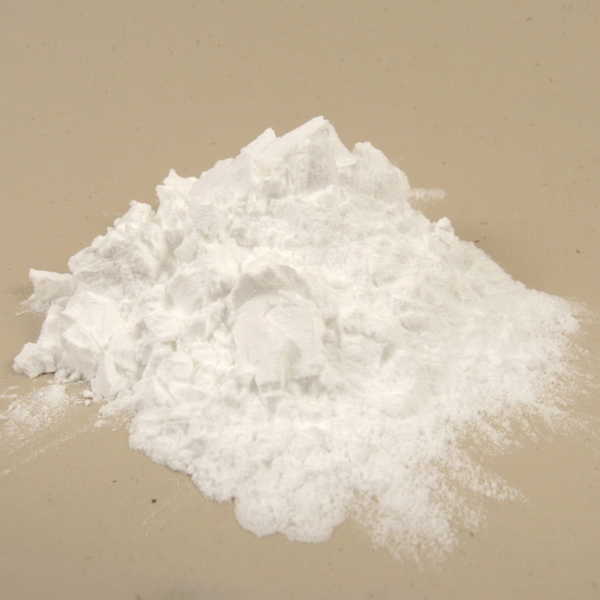
Our How To guides are intended to make the mordant dye process easy, from scouring your fibers to dyeing with an assortment of dyes. You can find other How To guides here.
What is Mordanting?
Mordanting is the most important process of preparing fibers to accept color. Using a mordant helps to ensure the most durable and long-lasting colors. With the exception of indigo (as a vat dye, it does not require a mordant), this is not an optional step.
(Check out our Q & A: Round Up of Scouring + Mordanting 101 here.)
Most mordants are calculated based on a percentage of the weight of fiber or WOF. Weight of fiber (WOF) refers to the dry weight of the yarn or fabric to be mordanted. It is used primarily when weighing mordants and dyes and allows you to quickly and easily calculate how much to measure. Therefore, a kitchen scale is handy to determine the weight of yarns or fabrics. We have also provided easy teaspoon and tablespoon measurements based on 100 grams of fiber.
Mordanting with Aluminum Acetate
We often mordant cellulose (plant-based) fibers with aluminum acetate, and then follow that with a wheat bran or a calcium carbonate bath, as either of these ingredients help to improve the aluminum acetate’s performance.
Don’t have aluminum acetate? You may also successfully mordant using tannin and aluminum sulfate. This is a traditional mordant used for plant fibers prior to the introduction of aluminum acetate and is applied at room temperature. Instructions are available here and are courtesy of Catharine Ellis and Joy Boutrup’s book, The Art and Science of Natural Dyes and The Studio Formulas Set for The Art and Science of Natural Dyes (companion recipe cards to the book).
Safety instructions
We recommend wearing a dust mask or respirator, gloves, and an apron with all powders as they can be irritating to the nose, throat, and skin. Aluminum acetate is very powdery, smells strongly of vinegar and can irritate nose and throat. We strongly recommend adult supervision if working with children and keep all mordants and dye ingredients safe from children and pets.
We also recommend that you keep dye tools and utensils separate from kitchen tools and work with plenty of ventilation. Aluminum acetate may be safely disposed in a municipal water system by pouring down the drain. Do not dispose of in waterways or drains that flow into waterways.
Calculating the amount of mordant
Aluminum acetate: the recommended amount of aluminum acetate is 5 to 10% WOF, or 2-4 rounded teaspoons for 100 grams of fiber. A higher percentage of mordant will increase the depth of shade.
Wheat bran: the recommended amount of wheat bran is 5% WOF, or 4 teaspoons for 100 grams of fiber.
– OR –
Calcium carbonate: the recommended amount of calcium carbonate is 5% WOF, or 1 rounded teaspoon for 100 grams of fiber.
You will need
This list of ingredients is for 100 grams/4 ounces of fiber, and with 5% aluminum acetate. Adjust the amount of materials as necessary, per the percentage guidelines above. Note that if you use hot tap water, you will not need to heat the mordant bath.
For mordanting:
- 100 grams/4 ounces cellulose fiber
- 5 grams/.17 ounces/2 rounded teaspoons of aluminum acetate
- A container to dissolve the aluminum acetate
- Heat source (optional; see Note above)
- A large stainless steel dye pot
- Dye rings (if dyeing skeins of yarn)
Choose either wheat bran or calcium carbonate as your final bath. You do not need to do both.
For wheat bran bath:
- The above 100 grams/4 ounces of mordanted fiber
- 5 grams/.17 ounces./4 teaspoons wheat bran
- Cheesecloth
For calcium carbonate bath:
- The above 100 grams/4 ounces of mordanted fiber
- 5 grams/.17 ounces./1 rounded teaspoon calcium carbonate
Wet out the aluminum acetate in cold water and dissolve in boiling water. It may be a bit lumpy and sticky, but the lumps work out fairly quickly. A whisk is helpful. We recommend a dust mask when dissolving aluminum acetate as it is very powdery and the strong vinegar smell can be irritating.
Fill a dye pot with hot water from the tap – approximately 110-120°F. If you use hot tap water, you do not need a heat source as this is sufficient heat for mordanting. You may also use a clean bucket or container for mordanting with aluminum acetate.
Add the dissolved aluminum acetate and stir well. Then add the fiber to the dye pot, rotating the fibers gently. Press out air bubbles under fabric folds, or in floating yarn.
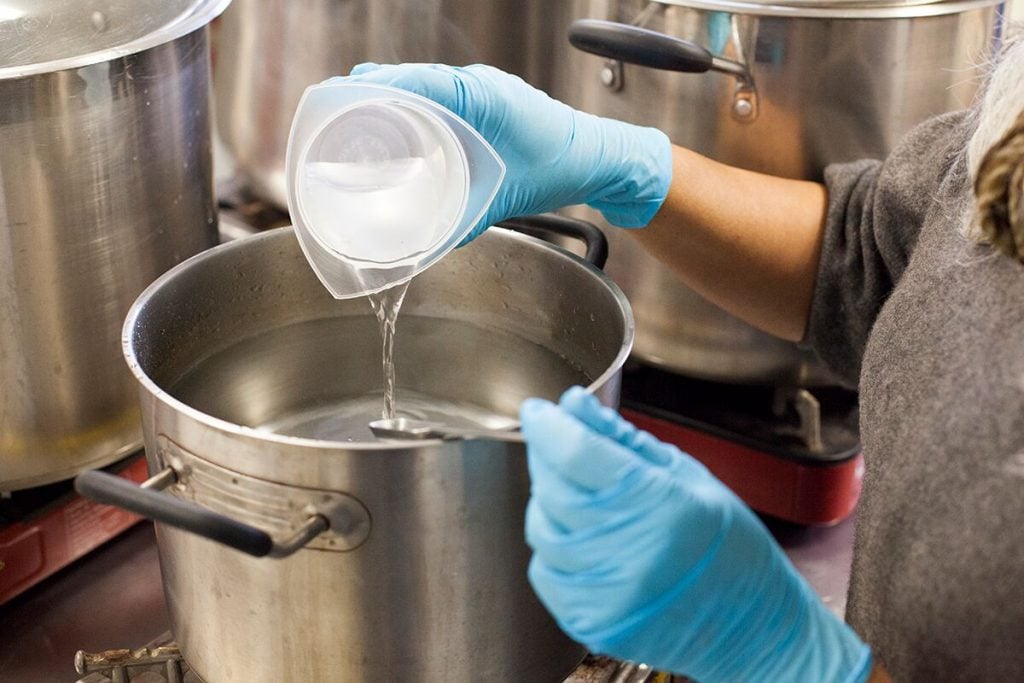
If you are heating cold water, heat only to 110°F.
Rotate goods occasionally and hold for 45 minutes.
Remove fibers from the dye pot. Rinsing is not necessary. Remove excess water and proceed to the wheat bran or the calcium carbonate bath.
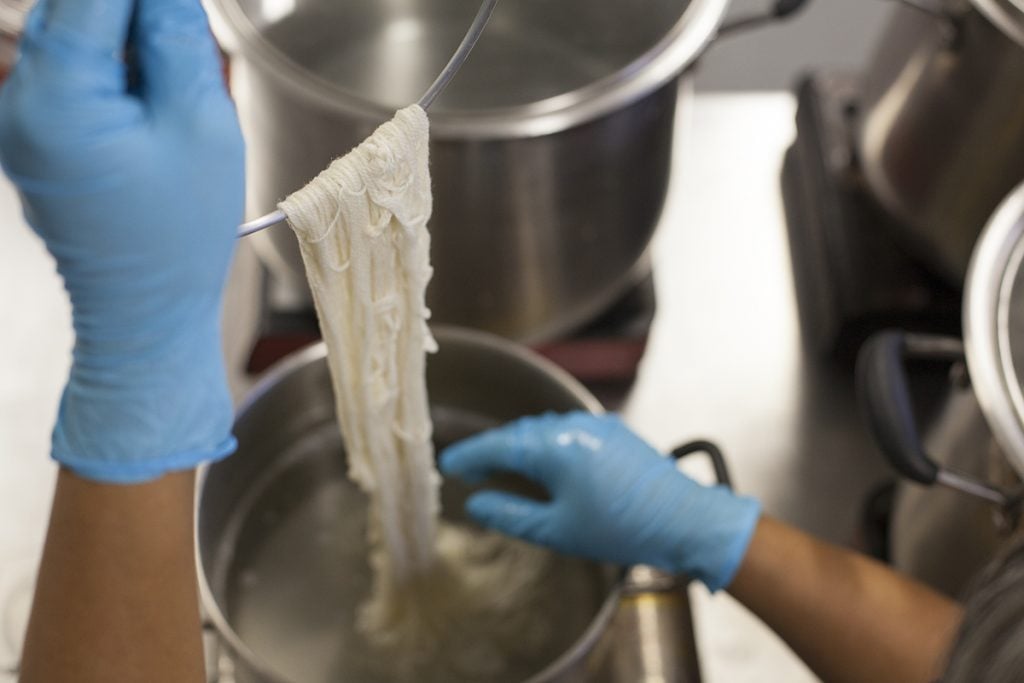
Wheat bran bath
Enclose the wheat bran in a cheesecloth bundle if you don’t want bran bits all over your fibers. Soak the wheat bran bundle in a small bucket or container of water just off the boil for about 30 minutes. The solution will be milky. This solution lasts about 1-3 days. If you notice it starting to bubble or smell fermented, it’s time to make a fresh solution.
Fill a bucket that is large enough to hold your mordanted fabric with hot water from the tap – approximately 110-120°F. If you use hot tap water, you do not need a heat source as this is sufficient heat for the bran bath. Add the bran solution and the bundle of bran to the bucket. You can gently squeeze the bundle to extract more of the bran goodness.
Place the mordanted fibers into the bath for 30 minutes, rotating occasionally.
Remove the fibers from the bath. Rinse lightly before placing into the dye bath. The fibers are now ready for dyeing.
Calcium carbonate bath
Mix the calcium carbonate with boiling hot water and add to a bucket or container large enough to hold your goods.
Add yarn or fiber and leave for 15-30 minutes.
Remove, rinse lightly and proceed to dyeing.
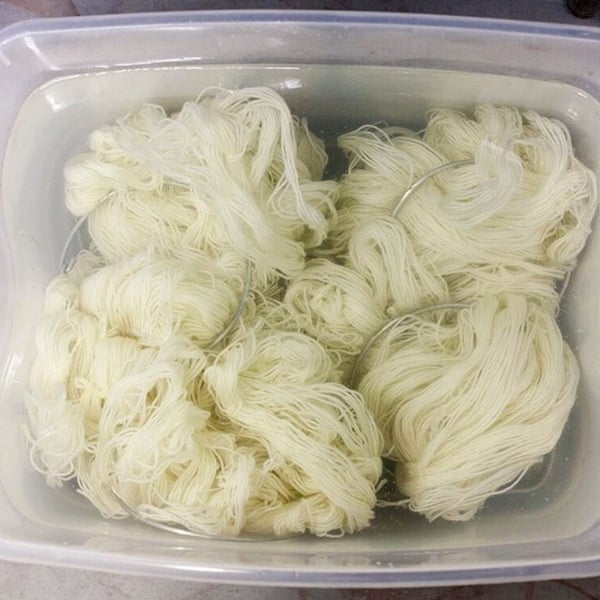
Reusing the bath to save water and mordant
Reuse aluminum acetate baths at least twice. If you observe cloudiness or flakes floating in the bath, it is time to change it. Recharge the bath with 50% of the amount of required mordant, or 1 teaspoon per 100 grams of fiber for a 5% solution, or 2 teaspoons for a 10% solution.
Storing mordanted fibers
You may leave the fibers in the mordant solution overnight, then extract excess water, place in the afterbath of wheat bran or calcium carbonate, rinse, and proceed to dyeing. Mordanted fibers may be stored damp in a plastic bag and refrigerated for 3-5 days and cured or aged, as this also seems to increase the depth of shade in the dyed fibers. For longer storage, mordanted fibers may be air dried and stored for future use. Label and store your mordanted fiber and keep it away from dust or dye powders, as it is vulnerable to staining.
You might also like to read:
Q & A: Round Up of Scouring + Mordanting 101
Video of Live Q&A For (New Cold Water Mordant) Aluminum Triformate
Our weekly Mordant Monday series!

